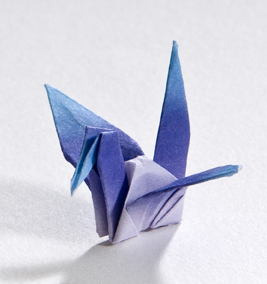Chemotherapy is the backbone of treatment for Ewing sarcoma (ES):
- Multi-agent chemotherapy is essential for long-term survival in patients with local and metastatic disease. Prior to routine use of systemic chemotherapy in addition to local control, less than 10% of patients with ES survived.
- Current survival rates are 70% for patients with localized disease and 30% for patients with metastatic disease.
- Following staging investigations, induction chemotherapy is initiated prior to local control. Standard induction chemotherapy consists of six cycles over 12 weeks and is followed by local control at week 13. This helps to achieve a reduction in the soft tissue component of the tumor and initiate bone healing.
- Chemotherapy is resumed as soon as possible after surgery, or is continued during radiation if this is the method of local control.
- Current standard practice includes 14 cycles in total, each two weeks apart as per the completed Children’s Oncology Group study protocol AEWS0031 regimen B. The five drug alternating combination using interval compression should be considered the North American standard therapy for localized Ewing sarcoma (EFS 73% at 5 years for patients presenting with localized disease).
Effective chemotherapy agents include:
- Alkylating agents such as ifosfamide (I) cyclophosphamide (C)
- Plant alkaloids vincristine (V), etoposide (E),
- Cytotoxic antibiotics doxorubicin (adriamycin) (D) and dactinomycin (A)
A European Intergroup Cooperative Ewing Sarcoma (EICES) trial suggested that 1.2 grams of cyclophosphamide produced a similar event-free survival (EFS) compared with 6 grams of ifosfamide, and identified a trend toward better EFS for patients with localized Ewing sarcoma when treatment included etoposide (GER-GPOH-EICESS-92).
Protocols in the United States generally alternate courses of vincristine, cyclophosphamide, and doxorubicin with courses of ifosfamide/etoposide.
European protocols generally combine vincristine, doxorubicin, and an alkylating agent with or without etoposide in a single treatment cycle.
Duration of primary chemotherapy ranges from 6 months to approximately 1 year
The Euro-Ewing study: (EURO-EWING-INTERGROUP-EE99) the primary objective is to compare the event-free and overall survival of ES patients treated with standard induction chemotherapy comprising vincristine, dactinomycin, ifosfamide and etoposide (VIDE) followed by consolidation chemotherapy comprising vincristine, dactinomycin, and ifosfamide versus high-dose busulfan and melphalan (Bu-Mel) followed by autologous peripheral blood stem cell (PBSC) transplantation with or without RT and/or surgery. Patients who receive RT alone for local control are stratified by pretreatment tumor volume for post-radiation therapy.
Also see: ClinicalTrials.gov
NB :- Doxorubicin and dactinomycin can potentially interact with radiation and produce increased cardiac toxicity. The problem can be prevented by avoiding concurrent administration of these therapies.
- Alternating cycles of vincristine-doxorubicin-cyclophosphamide and ifosfamide-etoposide has been shown to be superior to vincristine-doxorubicin-cyclophosphamide alone.
- The Children’s Oncology Group study (AEWS0031) showed that compression of chemotherapy cycles into 2 weeks instead of 3 weeks improved survival. Overall, there was a 73% vs 65% event free survival and 83% VS 77% overall survival at 5y for the compressed cycle regimen (B). This forms the basis for current standard of care in the treatment of Ewing sarcoma.
- Treatment related toxicity is a significant concern for these patients with prolonged periods of pancytopenia resulting in increased infection risk and prolongation of treatment. Anthracycline toxicity resulting in cardiomyopathy is also a major clinical concern. AEWS0031 found no significant increase in toxicity with the compressed regimen of chemotherapy cycles when patients are supported with G-CSF.
Important historical studies showing improved survival or prognostic indicators in Localized ES Family of tumors:
Study |
Therapy /Variable |
5-year event free survival |
IESS- 1 |
VAC |
24% |
POG-CCG |
VACD |
54% |
St Judes (ES-79) |
Tumor Size (using VACD) |
82% (3yr EFS) |
UKCCSG |
Tumor site (using VACD) |
52% |
CESS-81 |
Tumor viability (using VACD) Tumor Volume |
79% (3yr EFS)
80% |
Ongoing clinical trials continue to investigate additional approaches which include:
- The combination of vinblastine/celecoxib with standard ES treatment. The 2 year EFS was 35% (71% for the 7 patients with isolated pulmonary metastases and 26% for all others). There was excess toxicity in irradiated areas, limiting the usefulness of this protocol.
Current Therapy:
The current COG study is AEWS1031
This is a phase III randomized trial of: Adding Vincristine-topotecan-cyclophosphamide to standard chemotherapy in initial treatment of non-metastatic Ewing sarcoma.
The intergroup Ewing sarcoma study INT-0091 (CCG 7881, POG 8850) showed that a regimen of alternating vincristine-doxorubicin-cyclophosphamide and ifosfamide-etoposide was superior to vincristine-doxorubicin-cyclophosphamide alone.
AEWS0031 demonstrated interval compression to be superior to standard chemotherapy timing.
Cyclophosphamide with topotecan has been shown to be active in patients with recurrent and metastatic Ewing sarcoma.
COG AEWS1031 randomized Phase 3 trial will test the efficacy of adding vincristine, topotecan and cyclophosphamide to the interval compressed 5 drug backbone.
This study will also assess initial tumor volume, histologic response to induction chemotherapy and response measured by FDG-PET as prognostic factors for event free survival in patients with non-metastatic Ewing sarcoma.
Future Directions:
Molecular targeted therapies are being developed. As many as 85% of Ewing’s tumors are EWS-FLI1 positive and may serve as a tumor specific molecular target. One approach is based on the fact that the EWS-FLI1 oncogene product may function as a promoter for the vascular endothelial growth factor (VEGF). This is the basis for both the current anti-angiogenesis therapy with vinblastine/celecoxib, and is also likely to be addressed in a future trial with the use of an anti-VEGF antibody currently being explored in recurrent Ewing sarcoma. Use of siRNA nanocapsules also shows promise and is again being investigated in recurrent EWS-FLI1 positive tumors.

